Folks, we’ve all been there. You nick yourself splitting wood or cleaning game, and before you know it, that small cut is looking angry. Now imagine the drugstore’s closed for good and your last tube of Neosporin is a dried-up relic.
That’s basically how life was for soldiers and civilians during the Civil War. No penicillin or modern antiseptics. Just grit, whatever nature provided, and a lot of ingenuity.
One of their go-to fixes was a simple pine resin salve—what some of us call “Civil War Neosporin.”
It’s made from ingredients you can forage, grow, or keep in your stockpile, and it can last a year or two without refrigeration. I’m going to show you how to make it, why it works, and how our ancestors used it to keep minor injuries from turning deadly.
Disclaimer: I’m not a doctor, and this isn’t a replacement for proper medical care. Use this as a backup and always try to get professional help for anything serious.
What is Neosporin
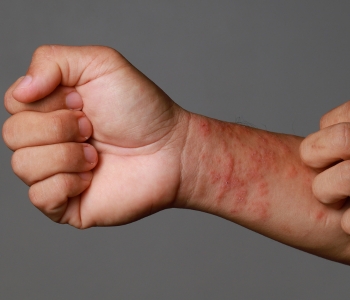 Neosporin is a household name for minor wound care. An over-the-counter antibiotic ointment designed to prevent infection and promote healing.
Neosporin is a household name for minor wound care. An over-the-counter antibiotic ointment designed to prevent infection and promote healing.
It’s convenient, effective, and something most of us reach for automatically after a scrape or cut. But Neosporin has limitations that you need to understand.
First, its rather short shelf life. Most tubes last only 1–2 years, and you already know (and if not, you should) what happens when you take expired medications…
In a long-term SHTF situation, relying solely on store-bought ointments can leave you unprotected when the next cut or burn occurs.
Second, overuse can be problematic. Some wounds may develop allergic reactions or antibiotic resistance if exposed repeatedly to the same topical antibiotic.
This is especially concerning if access to medical care is limited.
Finally, Neosporin is not a cure-all. Deep, puncture, or contaminated wounds require more advanced care.
In a scenario where modern medicine is unavailable, knowing alternatives, like historical pine resin salves, honey treatments, and herbal remedies, gives you an extra layer of protection.
Essentially, modern ointments are very helpful, but only if you have them and know their limits.
What Did They Use In The Civil War?
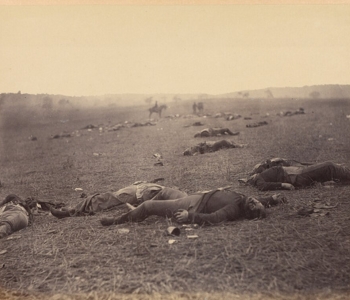 During the American Civil War (1861–1865), infections like gangrene and sepsis killed far more soldiers than bullets did.
During the American Civil War (1861–1865), infections like gangrene and sepsis killed far more soldiers than bullets did.
Surgeons worked with unsterilized tools, and antibiotics wouldn’t exist for decades. To keep wounds from turning deadly, they improvised with what was available: alcohol, honey, and salves made from fats, herbs, and pine resin.
These pine resin “pitch salves” acted much like a Civil War version of Neosporin: sealing cuts, blocking infection, and promoting healing when modern ointments weren’t an option.
They drew from folk and Native American traditions, proving that even in a crisis, nature can provide an incredibly strong layer of protection.
Key Ingredients & Why They Work
The core of this salve is simple, drawing from historical formulas adapted for modern use. Here’s a breakdown of the key components and their properties:
- Pine Resin (Rosin): The star antiseptic, harvested from pine trees as hardened sap. It’s antibacterial and antifungal due to terpene compounds, sealing wounds from dirt while promoting healing. Shelf-stable indefinitely if stored dry; forage from healthy trees.
- Beeswax: Acts as a natural preservative and thickener, creating a water-resistant barrier that locks in moisture and protects against contaminants. It’s antimicrobial and lasts years in cool storage.
- Carrier Oil (Animal Fat, Lard, Coconut, or Olive Oil): The base that carries active ingredients into the skin while moisturizing. Historical versions used lard for its availability; modern preppers prefer coconut oil for longer shelf life (up to 2 years) and antimicrobial properties. Chosen for pre-refrigeration eras because they don’t spoil quickly.
- Optional Herbs: Enhance with Civil War-era additions like yarrow (stops bleeding, anti-inflammatory), calendula (promotes healing, antiseptic), or comfrey (speeds tissue repair).
These are renewable—grow your own for sustainability. Substitutes like vitamin E oil extend shelf life further.
These ingredients were ideal historically because they’re abundant, effective without processing, and stable. Source quality ones safely—avoid diseased trees for resin—to ensure potency.
The Step-by-Step Recipe For DIY Neosporin
Let’s make “Pine Resin and Beeswax Salve,” a modern adaptation of historical wound care. This yields about 1 cup; scale as needed. Use weight measurements for accuracy.
Ingredients:
- 1/4 cup (about 2 oz) pine resin (foraged or purchased)
- 1/2 cup carrier oil (coconut or olive for modern twist; lard for authenticity)
- 2 tbsp (1 oz) beeswax pellets
- Optional: 1-2 tbsp dried herbs (yarrow, calendula, comfrey)
- Optional: 1/2 tsp vitamin E oil for preservation
Tools Needed: Double boiler or small pot, cheesecloth or coffee filter, sterilized jars, stirring spoon.
Steps:
Gather and Prepare Ingredients: Collect pine resin from a healthy pine tree—look for hardened sap on bark. Clean by removing debris. If using herbs, infuse them in oil first: Heat oil gently with herbs for 1-2 hours, then strain.
 Melt the Resin: In a double boiler on low heat, combine resin and oil. Stir until resin dissolves (30-60 minutes). Resin is flammable—keep heat low and supervise. Strain through cheesecloth to remove impurities.
Melt the Resin: In a double boiler on low heat, combine resin and oil. Stir until resin dissolves (30-60 minutes). Resin is flammable—keep heat low and supervise. Strain through cheesecloth to remove impurities.

Add Beeswax: Return the mixture to low heat. Add beeswax and stir until fully melted. If using vitamin E or herb infusions, incorporate now.

Pour and Cool: Pour into sterilized jars. Let cool completely (a few hours) to solidify.

Safety Notes: Work in a ventilated area; avoid open flames. Test a small batch first. Source resin from non-toxic pines—avoid treated trees.
This recipe mirrors historical methods but is safer with modern tools.
This remedy is especially popular within a community well-known across America for refusing products like Neosporin.
I’m talking about the Amish, who rely on natural antibacterial and healing remedies that are affordable, locally sourced, and time-tested.
You can discover all of their alternative medical solutions—as well as many other survival secrets—in one of the last physical copies available of The Amish Ways Book.
Can You Put Neosporin on a Dog?
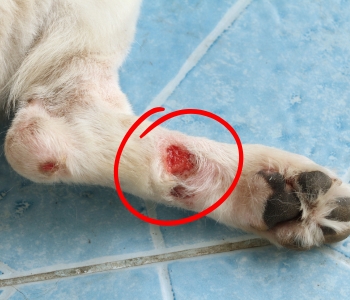 Many of us have four-legged companions, and it’s natural for you to wonder if Neosporin is safe for them. The short answer: sometimes, but with caution. Neosporin is generally safe for minor cuts, scrapes, or hot spots on dogs, but only in small amounts and for short-term use.
Many of us have four-legged companions, and it’s natural for you to wonder if Neosporin is safe for them. The short answer: sometimes, but with caution. Neosporin is generally safe for minor cuts, scrapes, or hot spots on dogs, but only in small amounts and for short-term use.
Dogs tend to lick anything applied to their skin, which can reduce effectiveness and sometimes cause mild upset if ingested.
It’s safer to use a natural alternative to Neosporin for pets. If you want to do that, you can adapt the Civil War pine resin salve. The basic formula is the same, but keep it mild for sensitive dog skin.
Ingredients:
- 1/4 cup pine resin (cleaned of debris, from a safe tree)
- 1/2 cup carrier oil (coconut or olive oil works well for dogs)
- 2 tbsp beeswax
- Optional: a pinch of dried calendula or chamomile (gentle on skin, promotes healing)
Instructions:
- Infuse the oil (optional): Heat the carrier oil gently with herbs for 1 hour, then strain.
- Melt resin and oil: Combine pine resin and carrier oil in a double boiler over low heat, stirring until fully blended.
- Add beeswax: Stir in beeswax until melted and smooth.
- Cool and store: Pour into sterilized jars and let solidify. Keep in a cool, dark place.
How to use:
Apply a thin layer to minor cuts or scrapes, then prevent your dog from licking it for a while. This salve forms a protective barrier, helps prevent infection, and is safe if a small amount is ingested.
How to Use, Store, & Apply the Salve
 For minor cuts, scrapes, burns, or bug bites, start by cleaning the area well with soap and clean water (get it by using this), or a saltwater rinse if needed.
For minor cuts, scrapes, burns, or bug bites, start by cleaning the area well with soap and clean water (get it by using this), or a saltwater rinse if needed.
Spread a thin layer of the salve over the wound, cover it with a clean bandage, and reapply a couple of times a day.
Store your salve in a cool, dark spot. You can now store all your resources safely (including in case of an EMP or even a nuclear strike) by using this tested solution that will cost you less than the cheapest iPhone!
On average, it will last 1–2 years. You can toss in some vitamin E to help it last even longer, or refrigerate for extra shelf life.
Keep an eye on it! If it starts to smell off, shows mold, or changes color, it’s time to toss it.
And remember: This salve is a valuable fallback but not a replacement for antibioticsI! Use modern medicine when available.
Test for allergies by applying a small amount to your inner arm first. For serious infections, prioritize professional care. Experiment with herb blends, but keep a balanced kit: Traditional plus modern. Always forage responsibly.
Other Civil War–Era Infection Remedies
Beyond the salve, soldiers used many other natural such as:
- Honey & Sugar Paste: Applied to draw moisture from wounds, starving bacteria. Antimicrobial due to hydrogen peroxide in honey.
- Whiskey or Moonshine Wash: High-alcohol rinses disinfected cuts; alcohol kills germs on contact.
- Onion Poultice: Mashed onions wrapped on wounds to draw out infection—contains antibacterial compounds.
- Saltwater Soak: Reduced bacterial load by creating a hypertonic environment that dehydrates microbes.
These worked via basic antimicrobial actions and were easy to source.
Speaking of sugar, be mindful of your sugar intake, especially if you plan to include it in recipes. Consuming it in moderation is essential to prevent health issues or to avoid worsening conditions like type 2 diabetes. If you are dealing with such a condition, you can follow a natural protocol, like the one found here, and any sugar consumption should always be guided by your doctor’s advice.
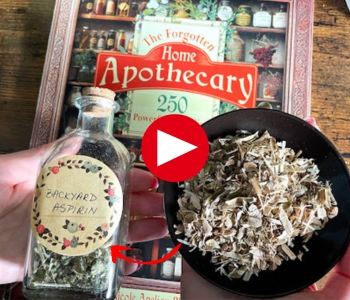 I recently came across an extraordinary resource of natural remedies, many of which were once used on the frontlines.
I recently came across an extraordinary resource of natural remedies, many of which were once used on the frontlines.
The best part is that they’re made exclusively from plants.
And many of them are already growing in your backyard or nearby.
You just need to learn how to recognize them, which you can do with this.
Here’s what caught my attention the most:
- Field Medic’s Painkiller in a Jar
- Frontline Amoxicillin Alternative
- DIY Lung Shield for Harsh Conditions
- Gut-Healing Elixir for the Long Haul
All of these and many others can be found in Dr. Nicole Apelian’s The Forgotten Home Apothecary, one of the most highly regarded natural remedy books among American preppers—and worldwide!
Thousands of copies have already been sold, and the reviews are absolutely outstanding. Trust me, this book is a must-have, especially for when things spiral out of control and you need natural solutions.
Final Thoughts
When SHTF, being resourceful can save your skin. Making this simple pine resin salve, inspired by Civil War remedies, gives you a reliable, shelf-stable alternative to modern antiseptics. You can craft it yourself, store it in your kit, and practice applying it so you’re ready when the unexpected happens.
This is mostly about having skills you can trust. When pharmacies are empty and antibiotics are out of reach, knowing how to treat minor cuts, scrapes, and burns could make all the difference.
To treat wounds successfully—no matter how severe—it’s essential to have access to clean water. With The Water Freedom System, you can build a reliable supply without depending on the grid. It’s simple, affordable, and portable. Alternatively, you can choose The Smart Water Box—a path to complete independence that you can build on your own, no degree required.
You may also like:
Why a Civil War Is Now More Probable Than Ever
Recognize Life-Saving Plants Like an Expert Forager (Video)
10 Plants Soldiers Looked for During the Civil War
Survival Hacks From The Civil War That Are More Useful Than Ever


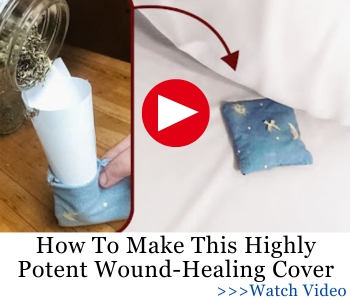




















FYI on the comment that meds expire fairly quickly like 1 to 2 yrs. I don’t recall the name of the study but our military doctors were tired of tossing so many meds away they had a study done at Ft Dietrick MD to see just how long most meds actually last and on average they stayed usable for over 20yyrs without any problems. Drug makers change outside packaging to make it look “new and better” to the consumer so you will keep using their products. They put “best by” on labels because the gubmint requires them to have it showing the date they will “guarantee ” the efficacy of the product but it doesn’t mean the meds are “bad” or unusable. THEY ARE TRYING TO SELL PRODUCTS THAT SOMETIME SIT ON THE SHELVES FOR YEARS WITHOUT BEING USED BUT ARE STILL JUST AS EFFECTIVE AS THE NEWEST VERSION. It’s called “making as much money as you can off your products” like the $800 single use epipen. You can find the study on line but I forget the name and I can’t find the copy I had. There are exceptions like with some antibiotics and most liquid meds but the overwhelming number of drugs you CAN use after “expiration” is startling. Then there are the fish ( mostly but not all) antibiotics and other meds you can use to replace human meds. After all they are made in the same factories. You just have to learn how to adjust for weight. Usually using a pig weight is recommended. But the great gubmint we have has started cracking down on selling those for human use so you will need to find a place on line to get them or have a friendly vet who will help.
Yes! I read the same study years ago and that study was some big reveal! I have not looked at expiration dates the same since! This is the first I have heard anyone mention the study in eons. I have a feeling that they are keeping it hush-hush now and that’s unfortunate, because so many people are being duped big time when they rely on expiration dates! Thank you for your post! I need to send it to a mother-in-law who needs a little education!
That Ft Dietrich study was part of a joint study between the DOD and the FDA Shelf-life Extension Program. Just google it and it pops right up!
Yes, that’s exactly it — the study you’re remembering is part of the DoD/FDA Shelf Life Extension Program (SLEP). For many people it was a huge eye-opener, because it showed that expiration dates are often more about guaranteed shelf life for the manufacturer than a hard cutoff for safety.
If you want to help your mother-in-law even further, you can offer her The Home Doctor – Practical Guide (it even contains information about happens when you take expired medications, natural painkillers, and many others).
You can order it from here:
https://hop.clickbank.net/?affiliate=lostways&vendor=homedoc&tid=A02Cosmin150DIYNeosporinHMDcomm
You’re right. There really was a program called the Shelf Life Extension Program (SLEP) run by the Department of Defense together with the FDA starting in the 1980s. Their testing showed that many medications remain stable and effective 10–20 years past the printed expiration date, as long as they’re stored properly (cool, dry, and away from light).
That said, not all drugs behave the same way. A few — like liquid antibiotics, nitroglycerin, insulin, and some tetracyclines — lose potency more quickly or can even become unsafe. So while a large percentage of meds last far longer than the label suggests, it’s important to know which categories are exceptions.
As for fish antibiotics, you’re also right that many of them are manufactured in the same facilities as human versions and contain the same active ingredients. But people should be cautious with sourcing and dosing.
thank you for keeping your word and printing the recipe for Neosporin like you said you would!